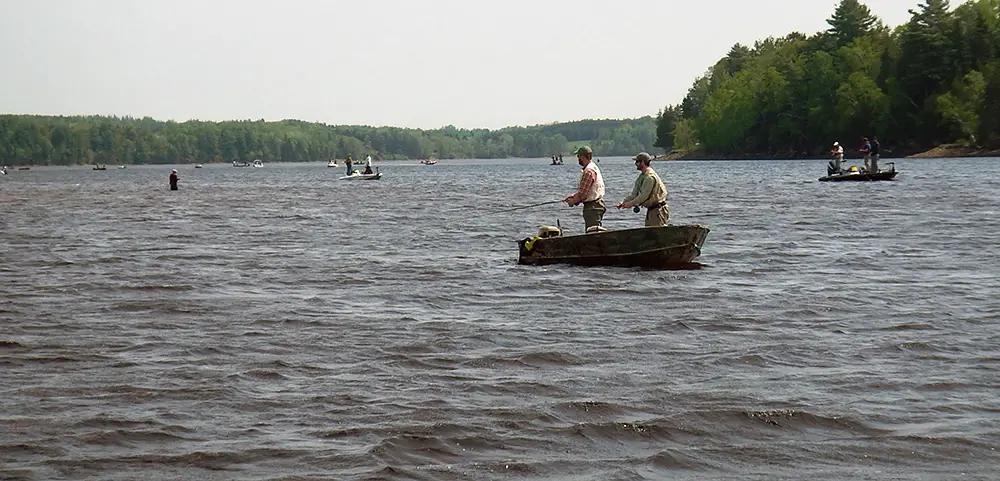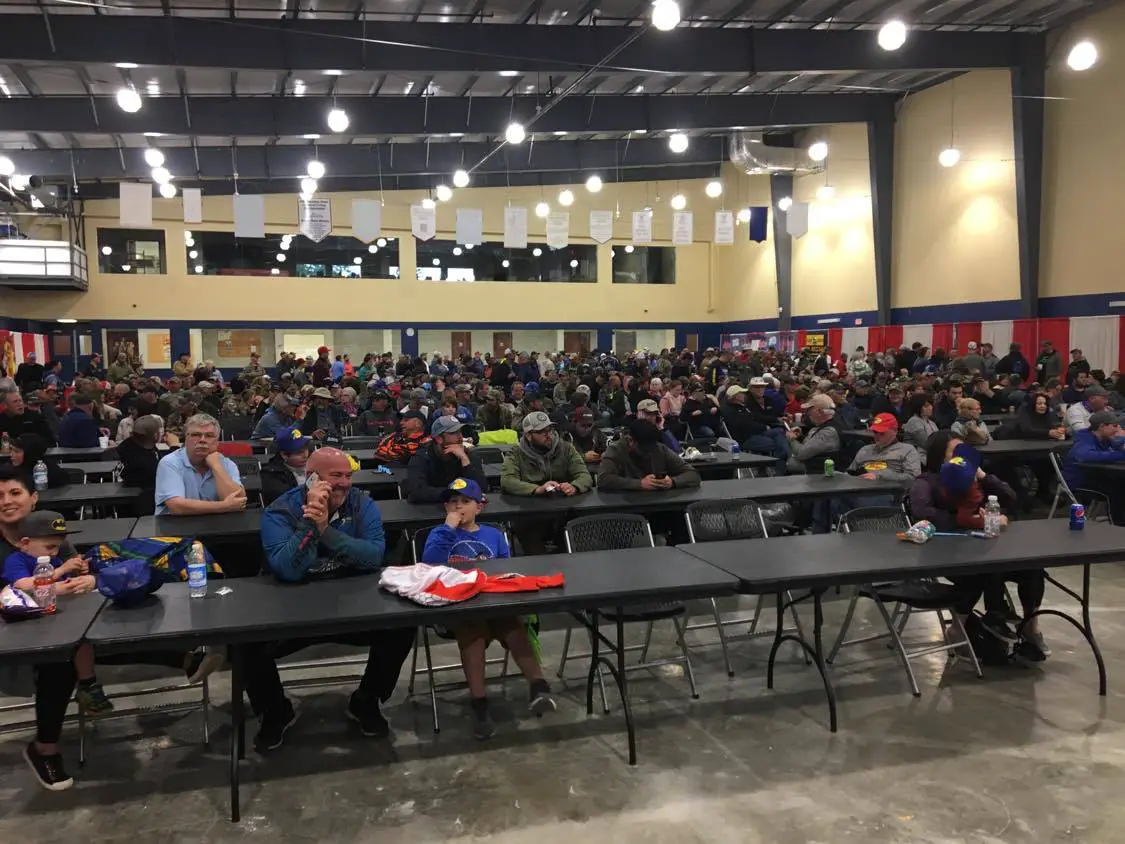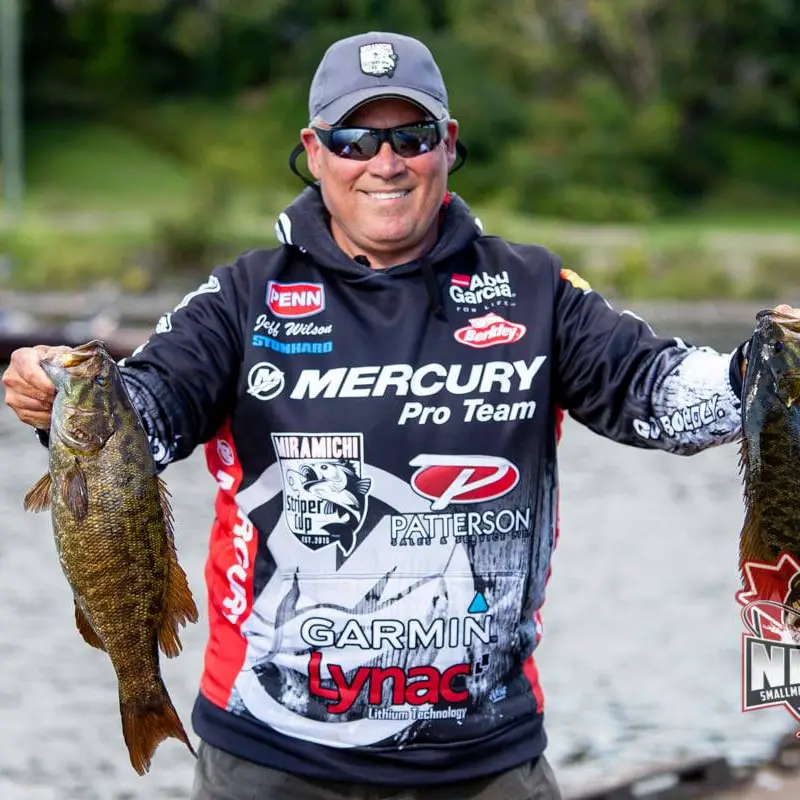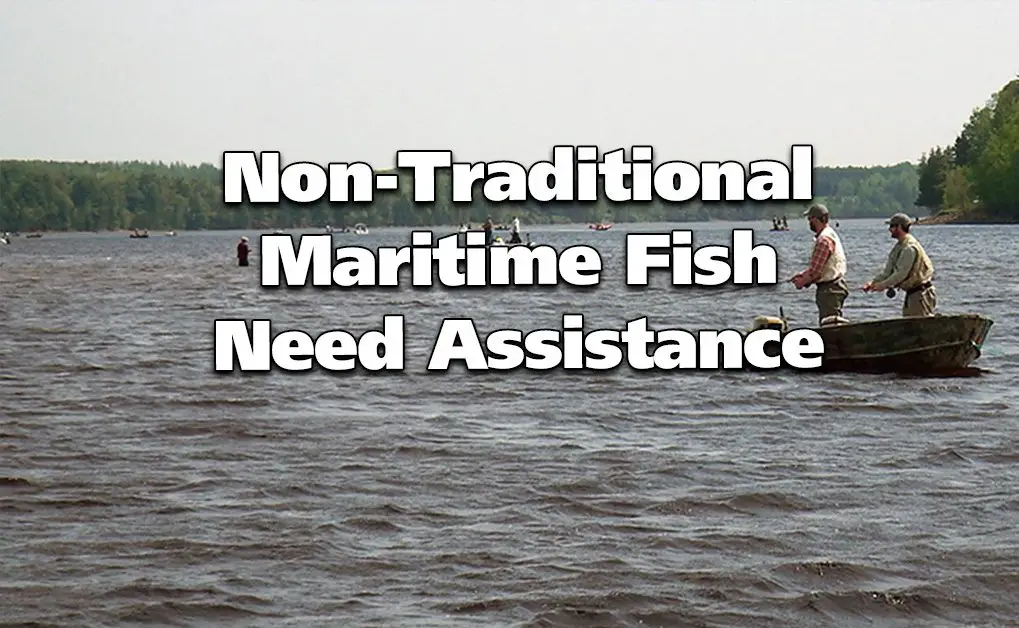Historically, East Coast recreational anglers have primarily targeted trout and salmon species. But given the habitat changes over the last 25 years, the reduction in overall stocks, and lack of successful fishing trips, many East Coast anglers have given up the sport in favour of more exciting endeavours.
In the last five years, with events like The Miramichi Striper Cup and television shows such as the Fish’n Canada Show, anglers have discovered some non-traditional species in a big way. From trophy muskies on the Saint John River to the striped bass in the Miramichi, anglers have found that “catching is more fun than fishing.”
Boat sales are up and tackle shops are busy as anglers discover our non-traditional trophy-class fisheries and share the stories of their success across social media. Muskie, striped bass, smallmouth bass, and sturgeon all are all seeing an increase in angling pressure and harvest. Many days in May on the Miramichi, upwards of 200 boats are on the water targeting the striped bass as they return to the river to spawn. The city of Miramichi estimates that the Striper Cup has resulted in millions in economic development for the week of the event alone. However, the angling pressure remains the same for most of the spawning run, which continues well into June.

Bass and muskie anglers have been religious about catch and release, resulting in an outstanding recreational fishery as 99% of fish caught are released to be caught again. Teaching these new anglers (who traditionally harvested everything they caught) the virtues of hook-and-release fishing will be a critical factor in the sustainability of these non-traditional species.

Most of these warm-water species are at the northernmost end of their range and have only survived due to extremely low harvest rates and limited angling pressure. With climate change affecting spring runoff, water temperatures are staying colder longer into June, causing the potential for reduced survival rates for the young of the year. These factors, combined with an increase in angling pressure, could lead to a collapse in these fisheries.
It has been the “catching” that has brought thousands of anglers to the Miramichi and led to a boom in recreational fishing all along the Gulf Coast. Striped bass that spawn in the Miramichi River every year in late May leave the river and spread across the Gulf Coast from Quebec to Cape Breton, leading to people lining the shores on every tide. In every small village on the East Coast, we see families out fishing. Many fishing groups and anglers have stepped up to host kids’ events, community derbies, and present seminars, all to educate the public on hook-and-release fishing and promote our world-class non-traditional fisheries. Kids love fishing when they are catching something, and these non-traditional species provide that thrill and will help bring the next generation out to discover the great outdoors.


We must not let our history repeat itself and ruin these fisheries by continuing the use of outdated management practices. Governments and traditional fishing groups have managed traditional species to the brink of extinction. Targeting species for harvest during spawning is just a bad idea and has led to the collapse of many fisheries. For example, harvesting smelt species as they spawn has led to a significant nutrient reduction in all rivers and resulted in a reduced capacity in the ecosystem for larger species.
Harvesting large breeding fish seems counterproductive to the long-term survival of any species, but this is, in fact, what DFO has mandated. In the Bay of Fundy region, only striped bass over 68 cm are to be harvested, effectively killing the largest breeding fish. Whereas in the Miramichi, at least for now, we have a slot limit—3 fish per day between 50 and 65 cm for recreational fishermen. But DFO has also allowed a Native commercial fishery that allows harvesting 50,000 fish up to 80 cm, all during the critical spawning season.
The problem is we already see a steady decline in stocks since increasing the harvest three years ago, and history shows how quickly the school can disappear. From 1995 to 1996, we saw a drop from 175,000 spawners to just over 13,500 in one winter.
Current stock levels show approx. 330,000 striped bass using the Miramichi in May, with many salmon groups pushing an immediate reduction to 50,000 as a method to support declining Atlantic salmon returns.
In the early 1900s, records show that 60 tons of striped bass were harvested per year with little effect on salmon and other species. During the 1990s and 2010s, salmon stocks were in steady decline while striped bass were added to the species at risk list with under 10,000 fish left, showing that salmon were certainly in trouble before the striped bass returned.
In 2010 when all fisheries were closed (no commercial harvest, no First Nation’s fishery, no recreational fishery) and when the population in the entire Southern Gulf of St. Lawrence was only 44,400 spawners (Douglas et al 2011), conservation officers estimated that “tens of thousands” of striped bass were removed by illegal harvest and catch and release mortality (DFO 2011). If we are losing “tens of thousands” during a low population abundance when there is no legal fishery, then DFO’s estimate for 2013 and 2014, when there was a legal retention fishery and rapidly increasing angler interest, is WAY off. (This estimate also does not consider non-retention periods.)
In 2019, angler access to the striped bass resource, which is calculated as (the number of days in the retention season) x (daily retention limit) had been increased dramatically by DFO. In 2013 resource access was 25 (25 days x 1 bass/day); it was 53 in 2014 (53 days x 1 bass/day). It is now 600 (200 days x 3 bass/day); this is a 2,300% increase from 2013 and a 1,000% increase from 2014. And DFO has not estimated any recreational metric since 2014. (Estimated because it has never actually been measured.)
Also consider that angler participation has increased dramatically (number of anglers, days spent on the water by those anglers), which means many more people keeping fish as well as releasing fish. Remember, also, that even released fish are thought to have a 10% catch and release mortality rate (US marine and fisheries commission, DFO 2014).
So what does this mean? If the argument is that we need to reduce the bass population size to 50,000 spawners, then 50,000 must be the number of spawners that remain after:
- All recreational harvest (which is unknown)
- All catch and release mortality (also unknown)
- All illegal retention (again unknown)
- All-natural mortality (thought to be highly significant in winter 2017; possibly playing a part in decreasing population from 994,000 down to 333,000 in 2018 despite recruitment, which would have greatly increased spawning abundance in 2018)
- All commercial harvest (there is a quota, but the catch is variable)
This remaining population must still be strong enough to produce sufficient offspring to meet the demands of this completely unknown and ever-increasing harvest despite annual seasonal weather variability that can significantly affect juvenile survival and spawning success. Also, consider that there is a very high error in current population estimates on the order of hundreds of thousands of individuals and that DFO defines “spawners” by size and not as a sexually mature fish. A proportion of “spawners” after having been tagged by DFO in the spring have been re-captured unspent—meaning they were not actually mature (Bradford and Chaput).
Political pressure to protect this fishery and defend all non-traditional species will require a grassroots angler movement. Other groups like MSA are pushing an immediate reduction in striped bass to 50,000 fish, supported by New Brunswick Salmon Council, Atlantic Salmon Federation, and many other salmon groups. This would effectively destroy the recreational striped bass fishery and the huge economic boom it has brought to Miramichi.

We as anglers must be the first line to defend our fishery by practicing hook and release fishing and letting the biggest fish go so they will produce more fish with the best DNA. Encouraging participation while educating others on the mistakes of the past is crucial, as natural resources are limited and fragile. Let’s make sure they last.
Educating returning anglers to become conservationists as they move into these non-traditional species will be a tall order. But one we must fulfill to protect these trophy class fisheries from mistakes of the past!
Remember: “Catching is more fun than fishing.“
“Release them for the Kids.”
- Jeff Wilson, Professional Angler and Conservationist






